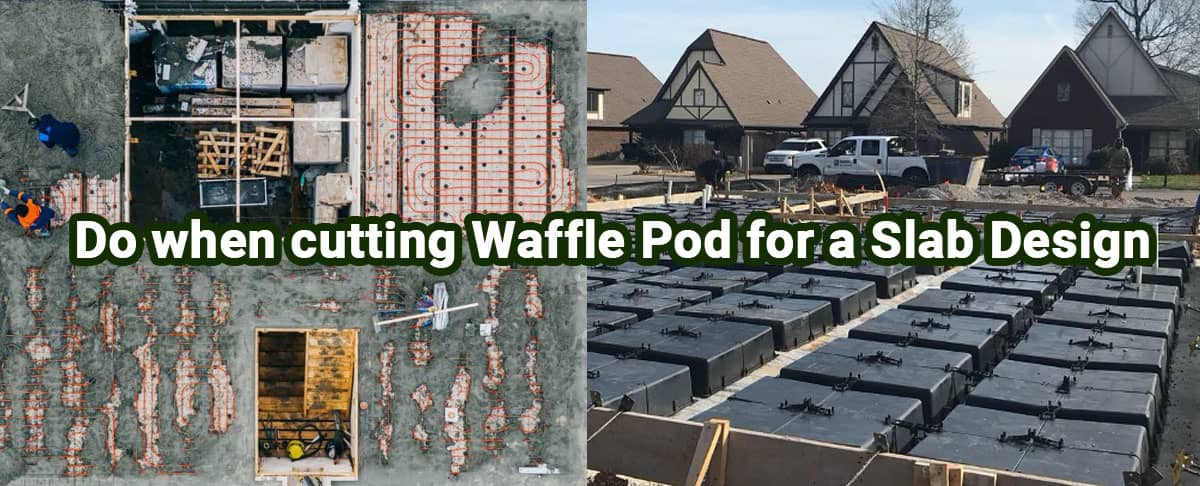Do when cutting Waffle Pod for a Slab Design

You need to understand what can be done with waffle pod slabs before you use them. It is almost always necessary to create custom fabrications for your new building to run efficiently. You can make any adjustment you need with waffle pod slabs, thanks to their versatility. When building a new house, some cutting or modifications may be necessary.
For making cuts in the waffle pod slab, consult both the structural plan and the architectural plan of the building. Avoiding unnecessary mistakes is one benefit of doing so. Making mistakes in the future can be very costly. Taking your time and paying close attention should not cause any problems.
Define Waffle Pod Slab
Concrete waffle slabs are made on the ground from reinforced concrete. They consist of an edge beam or perimeter footing and a series of beams or footings at one-meter intervals running through the slab longitudinally on top of the soil of the entire footings and slab system.
Polystyrene pods form voids between the strip footings between the edge formwork and the slab sides. The waffle-like appearance of the internal strip footings is a result of the way they look.
Offering cutting and design services for Waffle Pod Slab
Waffle pod void formers serve as voids in which to install essential infrastructures, such as pipes, gas lines, sewers, and plumbing. A major advantage of waffle pod slabs is that no digging is necessary. It's not necessary to dig trenches when installing waffle pod slabs.
A waffle pod slab is instead cast on a void former. If the void formers don't fit perfectly in your foundation, you may need to cut them. In contrast, you'll probably need to fill any holes in your void formers if you cut them. That will result in a higher building cost, so keep that in mind.
If you plan on cutting void formers, you will need to consider another factor. Cutting void formers can compromise their structural integrity. So, remember this when you are cutting your waffle pod slab.
Uses of Waffle Pod Slab
The waffle slab works well in flat sites, has natural soils or controlled fill that is strong, and where ground slopes away from the outside of the building and in all directions. The sites that are not reactive, slightly reactive clay sites, and some moderately reactive clay sites can treat with them.
The use of waffle slabs is not advisable on sites with highly reactive clay. It will fail to meet drainage requirements.
Benefits of Waffle Pod Slab
- In comparison to flat slabs, waffle slabs can carry heavier loads and travel further due to their lighter weight.
- Longer breaks are possible with post-tensioning, with an interval ranging from 7 m to 16 m.
- Both ceilings and floors can be built with waffle slabs.
- The lightweight nature of these systems enables substantial structural savings, as only a light framework is required.
Drawbacks of Waffle Pod Slab
- Conventional construction projects did not use waffle slabs.
- Due to its high cost, it is only economically feasible in large quantities.
- It requires skilled labor and rigorous supervision to construct a building.
Wrapping it Up
In addition to supporting single-family residences, multifamily residences, and light commercial structures, the Waffle Pod Slab supports above-ground, on-grade concrete foundations.
Despite being used for many years, these types of foundations are becoming increasingly popular since they offer a cost-effective solution to some old construction problems, such as material costs, construction delays, and foundation failures.
